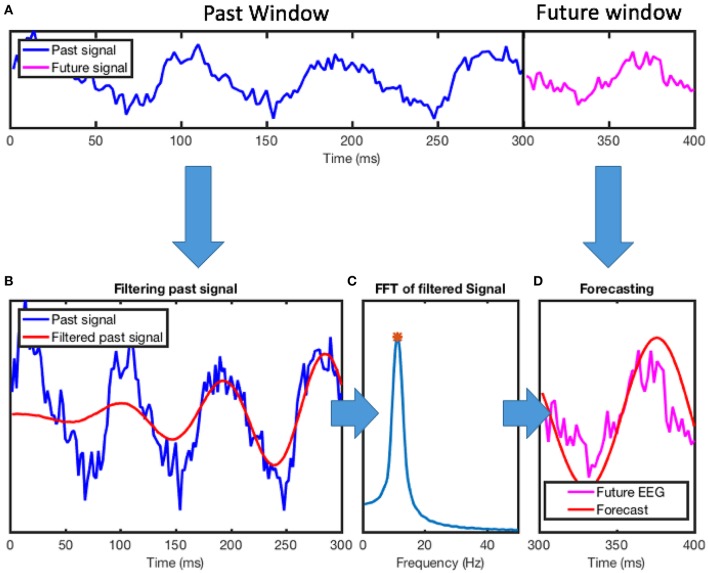Figure 1.
Overview of phase-tracking algorithm. (A) EEG recording from a healthy participant (electrode POZ in the standard 10–20 EEG montage). The algorithm uses a segment of the data (past window, Dpast) to forecast the signal into the future (future window, Dfuture). Here, a 300 ms window of past EEG data was used to forecast 100 ms into the future. (B) The algorithm first uses a IIR band-pass filter to separate the signal that is within the frequency band of the interest. Here, the frequency band of interest is the alpha band (8–13 Hz). Note that due to the input of a small segment of the signal in this step, the filter introduces an artifact in the beginning of the segment. (C) The FFT of the filtered signal is then calculated. The FFT bin with maximum content is selected as the dominant frequency in the signal and its phase and frequency is extracted for forecasting. (D) Based on the estimated phase and frequency, a sine wave is used to forecast the signal. For performance evaluation, this forecasted signal may be compared to the EEG signal to determine the phase-locking value. IIR, infinite impulse response filter; FFT, fast Fourier transform.

